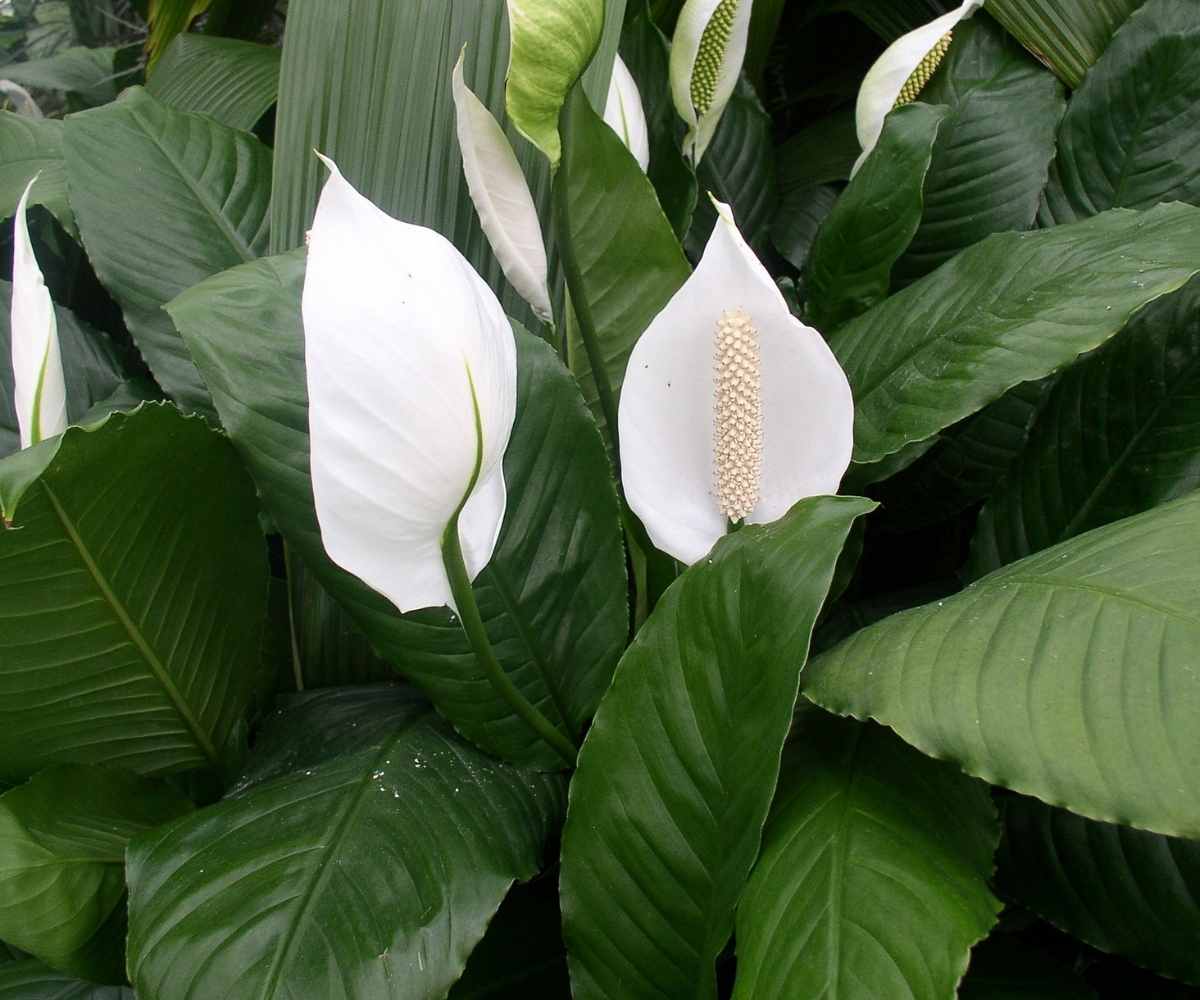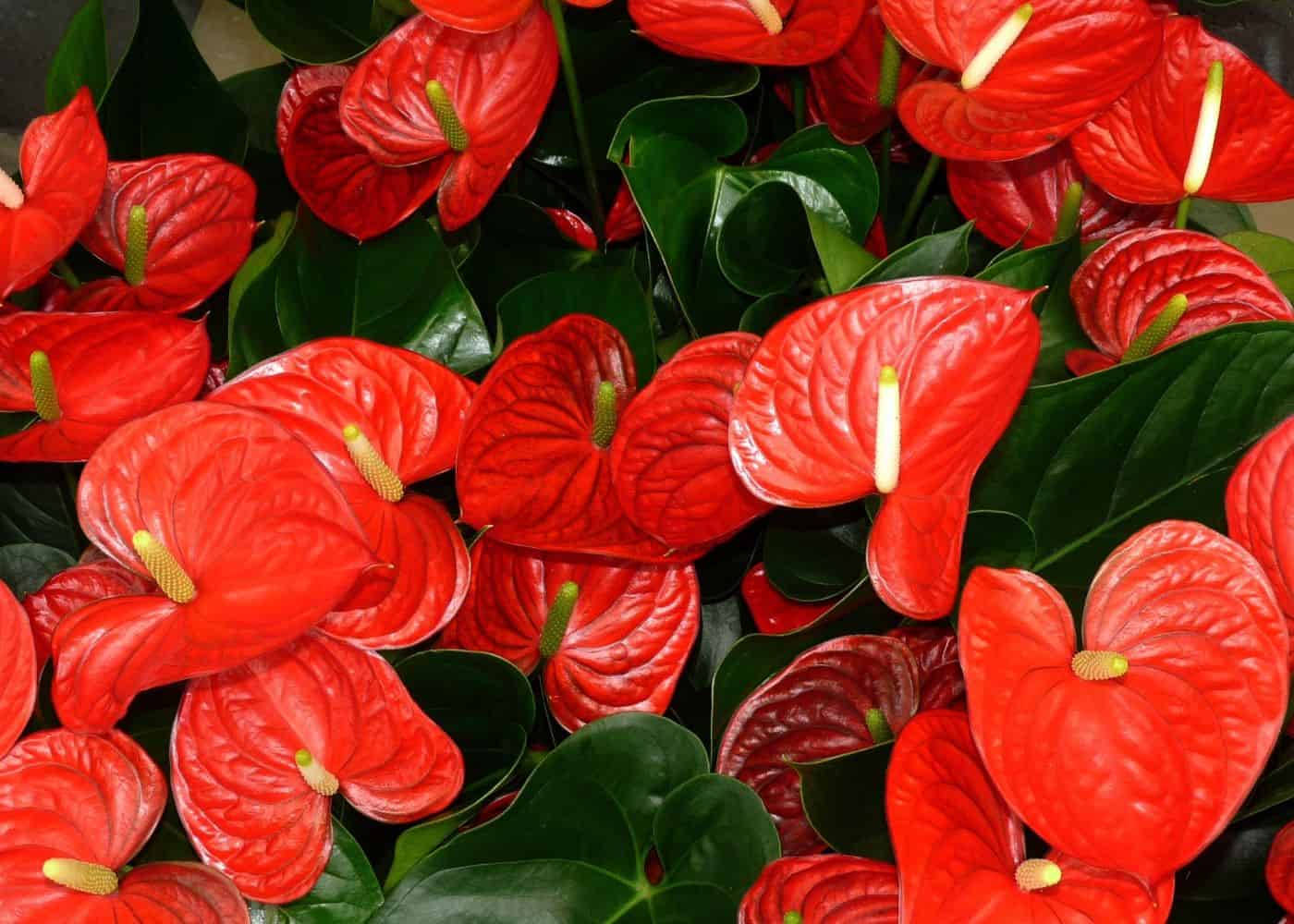Embark on a botanical journey with the captivating large peace lily plant, an alluring specimen that graces homes with its elegant presence and remarkable air-purifying abilities.
This tropical beauty boasts an impressive stature, adorned with lush, deep green leaves that form a graceful arching canopy. Its trumpet-shaped blooms, a symbol of peace and tranquility, emerge from the foliage, adding a touch of ethereal charm to any space.
Plant Characteristics

The large peace lily (Spathiphyllum wallisii) is an elegant and easy-care houseplant known for its distinctive features. This plant boasts large, glossy leaves and showy white flowers, making it a popular choice for homes and offices.
Large peace lilies can grow up to 3 feet tall and wide, with long, oval-shaped leaves that are a deep green color. The leaves are smooth and have a slightly wavy margin. The plant produces white flowers that are actually modified leaves called spathes. The spathes are typically 6-8 inches long and last for several weeks. They are often mistaken for petals, but they are actually part of the leaf structure.
Growth Habits and Ideal Growing Conditions
Large peace lilies are relatively easy to grow and prefer indirect sunlight or bright, filtered light. They can tolerate low light conditions, but they will not flower as well. The plant prefers moist, well-drained soil and should be watered regularly, allowing the soil to dry out slightly between waterings.
Peace lilies are native to tropical regions of the Americas and prefer warm, humid conditions. They can be grown outdoors in USDA hardiness zones 10-11, but they are typically grown as houseplants in colder climates.
Care and Maintenance
The peace lily thrives in a well-lit environment with indirect sunlight, making it an ideal indoor plant. It prefers warm temperatures between 65-80°F (18-27°C) and high humidity, making it susceptible to cold drafts and dry air.
Watering
Water your peace lily thoroughly when the top inch of soil feels dry to the touch. Avoid overwatering, as this can lead to root rot. During the growing season (spring and summer), water more frequently, and reduce watering in the fall and winter when the plant is dormant.
Fertilizing
Fertilize your peace lily monthly during the growing season with a balanced liquid fertilizer diluted to half strength. Avoid over-fertilizing, as this can damage the plant’s roots.
Pruning, Large peace lily plant
Peace lilies require minimal pruning. Remove any dead or yellowing leaves to encourage new growth. You can also prune the plant back to a desired size if it becomes too large.
Light and Temperature Preferences
Peace lilies prefer bright, indirect light. Avoid placing them in direct sunlight, as this can scorch the leaves. They also prefer warm temperatures between 65-80°F (18-27°C). Avoid exposing them to cold drafts or temperatures below 55°F (13°C), as this can damage the plant.
Benefits and Uses: Large Peace Lily Plant

The large peace lily offers a myriad of benefits, contributing to both well-being and aesthetic appeal.
Its air-purifying capabilities have been scientifically proven, making it an ideal choice for indoor environments. The plant effectively removes harmful pollutants such as benzene, formaldehyde, and trichloroethylene from the air, creating a healthier living space.
Interior Design and Home Decor
Beyond its air-purifying abilities, the large peace lily also plays a significant role in interior design. Its elegant foliage and graceful silhouette add a touch of sophistication and greenery to any room. Whether placed as a standalone statement piece or incorporated into a larger arrangement, the plant instantly enhances the aesthetic appeal of a space.
Potential Medicinal Properties
In addition to its air-purifying and decorative qualities, the large peace lily also holds potential medicinal properties. Studies have shown that extracts from the plant may possess antibacterial and antifungal properties, making it a potential source of natural remedies.